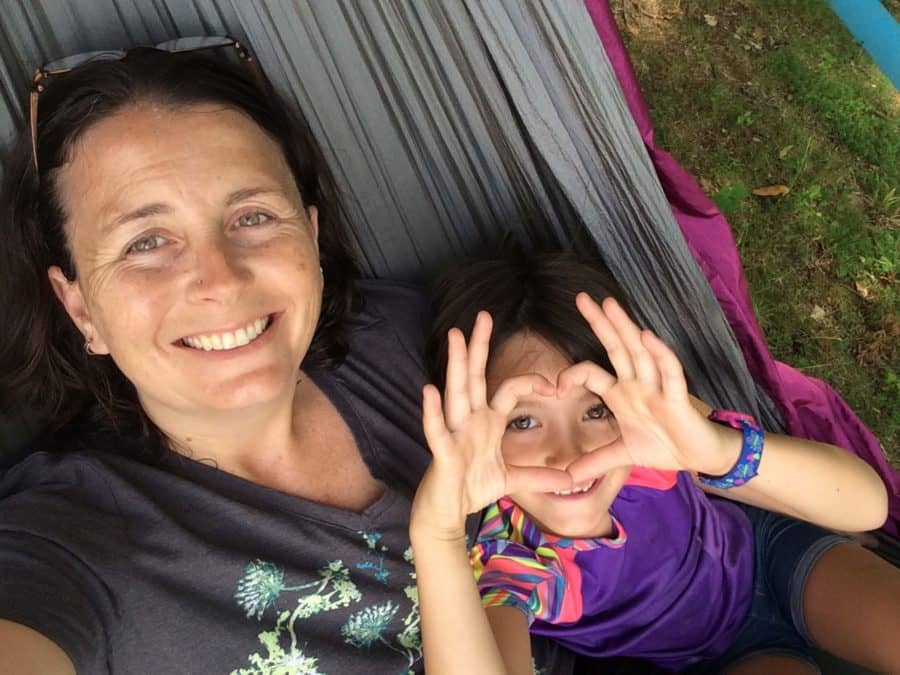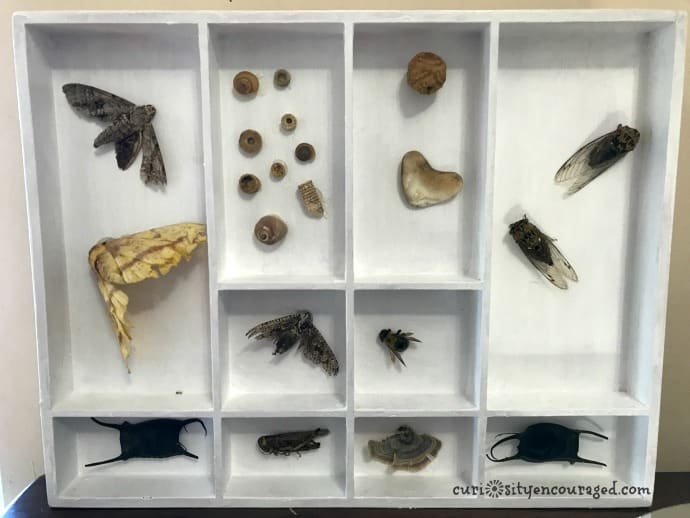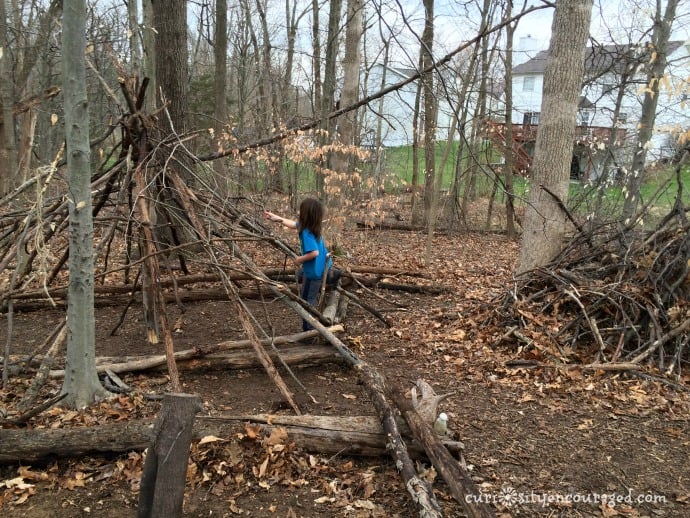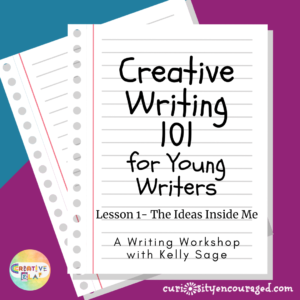Disclosure- Links in this post may be affiliate links. If you click through and make a purchase, I earn a commission at no additional cost to you. Unless noted, if I am reviewing a product, I have been compensated for my time. I write honest reviews. They are not required to be positive. I only recommend the resources we love and use.
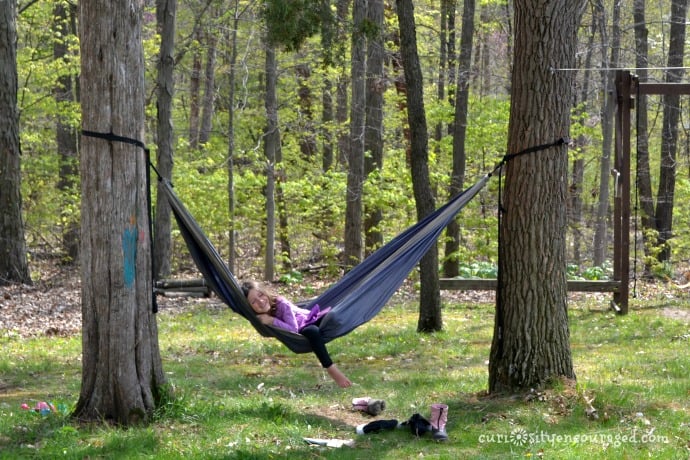
One of the best places to learn is outside. Whether kids are doing homework, exploring, or just taking it all in, decent weather and a good place to sit are all you need to create a perfect classroom. Our family heads outside whenever we can. We play games, relax and spend time as a family. We homeschool and build forts and fairy houses. And, in my opinion, there is no better place to read and write. Ready to create an outdoor classroom? Here are our favorite ways to take learning outside.
Creating an Outdoor Classroom
Creating an outdoor classroom is easier than you might think. Your backyard, a deck or porch, a local park or hiking trail, open your mind and get outside, and you’ve created an outdoor classroom. No special equipment is needed. A classroom is a place to learn, and the outdoors is the biggest classroom you’ll find!
Take Reading Outside
Sunshine, a hammock, and a good book are great ways to spend time. Kids who love books might think so too, and kids who are reluctant readers might find being outside makes reading more enjoyable.
There’s no secret or trick. Take your family read-aloud or gather up your kids’ favorite picture books, and instead of plopping on the couch, head outside.
Take Writing Outside
Encourage the love of writing while having fun outdoors. Here are a few ways to get started.
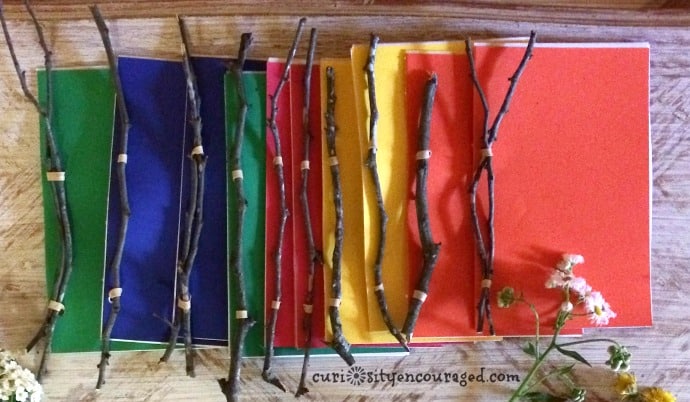
Make Nature Journals
- Choose the paper for the inside. I like putting in a variety of different types of paper. I try to include lined, blank, tracing, and something thick, like watercolor paper. Cut all to size.
- Choose a cover and back. Something heavy and durable like cardstock or cardboard. Cut it just a little bit bigger than the inside pages.
- Punch two holes in every sheet making sure they line up.
- Have kids find a slim stick in your backyard.
- Break the stick to the size of the journal. It’s okay if it’s a little longer.
- Use a string or a rubber band to hold the journal together.
Find Inspiration
- Nature journals can hold drawings, writing, or nature itself.
- They help kids observe something in nature they’re interested in learning more about. They might take a dandelion apart and draw each part separately or observe a squirrel and write about what the animal is doing.
- Nature journals can also capture how we feel when we’re in nature or tap into our senses- what do we hear, smell, taste, see, and feel.
Get Writing with a few prompts
- Close your eyes and just listen. What do you hear? Focus on one sound. Listen closely. Write about what is making that sound.
- Look closely at the ground next to you. Imagine you were shrunk down to a very small size, maybe an ant size, what would you be seeing, doing, and feeling? Write a story about one of your adventures.
- Write about how you are feeling right now. What do you love? What don’t you love? What are you wishing for?
- Find an object you can hold. Feel it, smell it, examine it. Use your writing to describe every detail.
To cultivate a writing culture in your home and backyard, let writing be creative, fun, and a way to process. Tell kids not to worry about spelling or grammar. A nature journal is not a place for perfection. It’s a place to collect ideas, stories, questions, what we’re experiencing, and learn about nature.

Take Science Outside
There is no better place to play with science than in the backyard. Already filled with things to question, observe, collect, and identify, the outdoors offers children the perfect place to learn. Kids are natural scientists. They’re curious, ask questions, and want to know how things feel and smell. We can encourage our scientists by letting them explore! We can also offer them a few fun ways to deepen their discoveries.
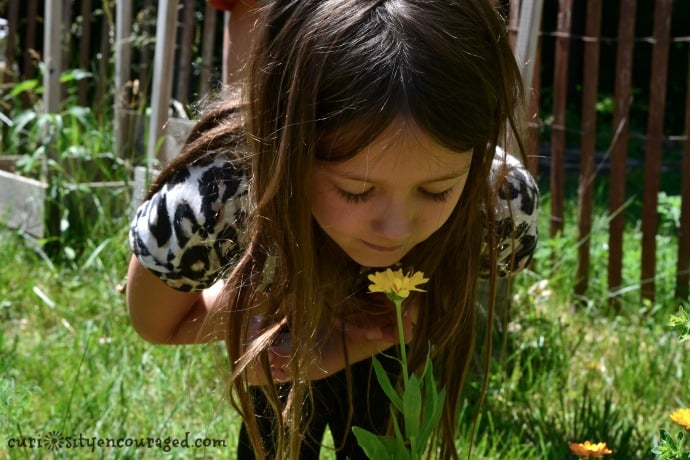
Backyard Science is all about simplicity. Many of the things in your backyard and house can lead the way. Here are some of our favorite ways to play and learn about science in our backyard.
Explore
Science invites kids into their senses. What does a bird’s nest feel like? What does the flower smell like? What animals are making the leaves rustle? Does a wild violet taste bitter or sweet? How many birds are visiting the bird feeder?
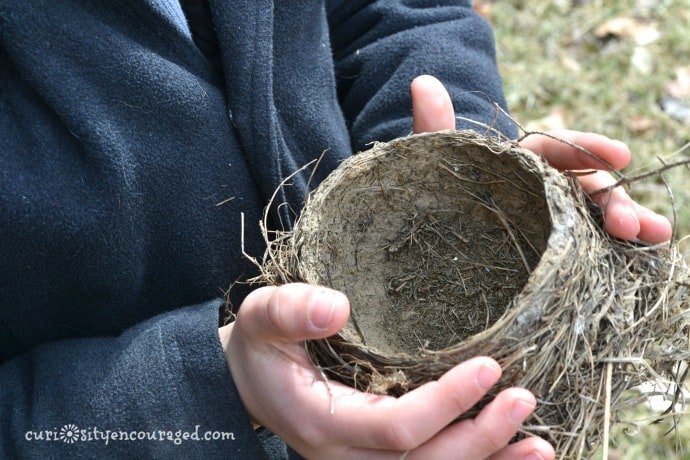
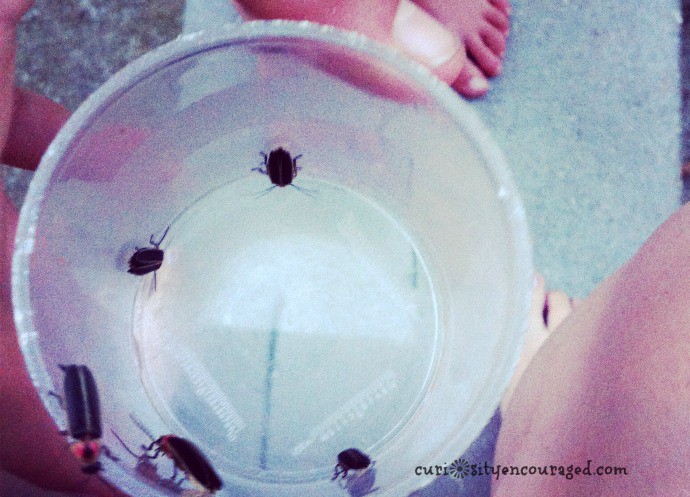

Encourage Observation
- Let kids touch, taste, and smell things you know are safe.
- Talk about what is safe and what needs to be observed with ears and eyes. Kids need to know they can’t taste just any plant in the woods, and it’s not okay to pull a bird’s nest full of eggs or babies out of a tree. Teach children to be kind to insects and animals and be by their side until you know they are. Gentle conversations, identification, and talk about cause and effect help keep hands-on observation safe for all.
- Play I SPY but with ears. I Hear . . . Practice careful listening to see what nature sounds like.
- Stop to smell the roses, watch an anthill, touch tree bark, and look for bugs.
- Ask questions and answer questions. The more we allow time for observation, the more our children will see it as meaningful.
- Be curious yourself- it rubs off.
- Don’t force. If a child doesn’t want to hold a worm or touch something sticky, it’s okay. Continue to offer them opportunities, let them know they are safe, and be okay when they aren’t interested. It took my son years to be okay with having dirty hands and to feel comfortable playing in the woods.
COLLECT
One of the best ways to encourage science and observation is by collecting. Again, it’s important to talk with kids about what is safe and what’s respectful. They shouldn’t kill a bug to collect it or pick every flower. Some things need to be collected in our minds and captured through pictures.
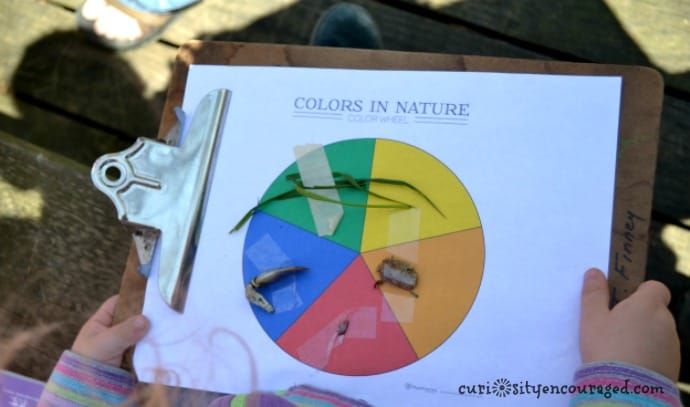
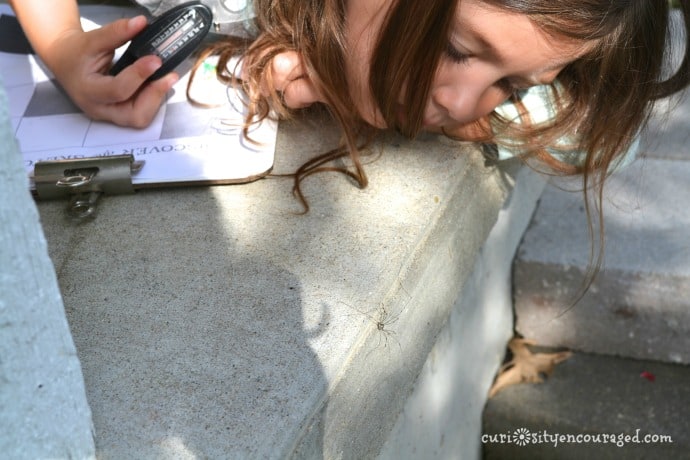
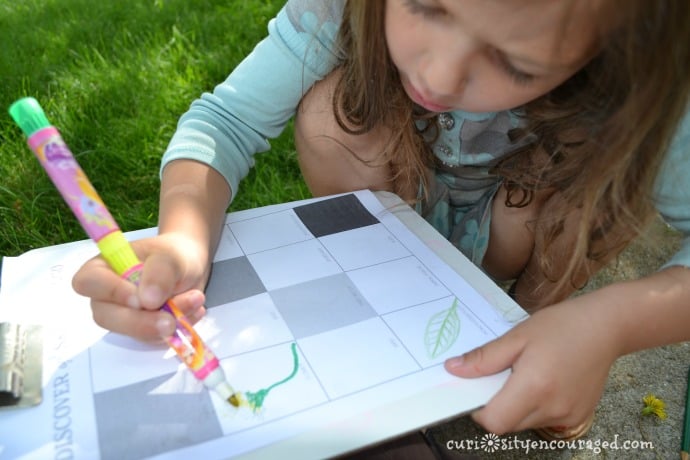
Tip- one of the challenges I’ve found over the years is how to display and keep my children’s collections. Recently, we repurposed Melissa and Doug’s toy boxes. With a little paint and hot glue and my daughter’s collections are now safe and beautifully displayed.
Experiment
A backyard is a GREAT place for experiments. Science can be pretty messy!

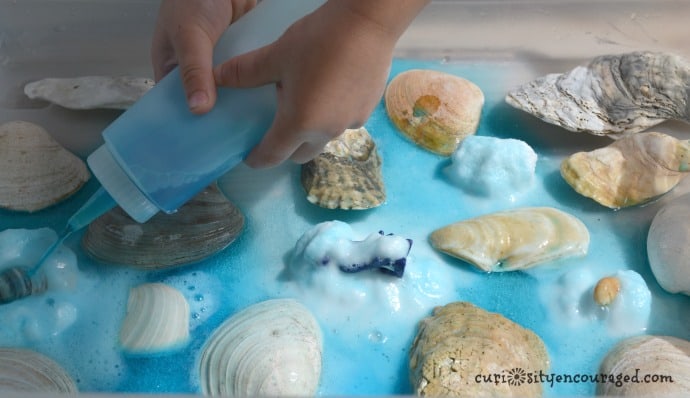
Our favorite experiments and activities-
-
- Egg Drop Challenge- An old favorite, construct a container that keeps an egg safe from a big fall.
- Baking soda and vinegar reactions- The one pictured above uses wet baking soda (molded into balls) and vinegar with blue food coloring. Add in shells, and it’s a fun way for small children to play and create reactions. Older kids can make volcanos out of paper mache. Once dry and painted, pack the center with baking soda, and with the help of vinegar, they erupt.
- Dissect Owl Pellets
- Clean Water Science
- Solar Science
- Butterflies
Take Engineering Outside
One of my children’s absolute favorite things to do is build. Tree forts, bunk beds, fairy gardens, wooded villages, ramps, and obstacle courses- they have created so many amazing things over the years. They build, play, take everything down (or it falls down), and they build again. Like with most of their learnings, my encouragement looks like giving them access to materials and inspiration and letting them experiment and play. Outdoor building offers our kids’ imaginations so many places to land. Here are some ways to encourage and inspire building outdoors.
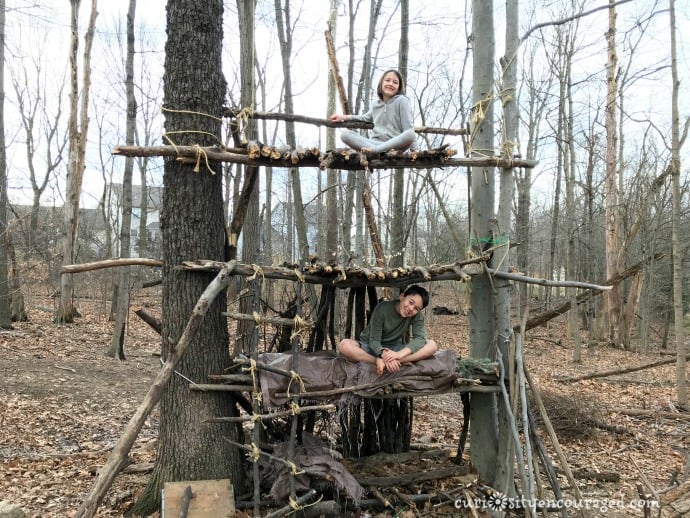
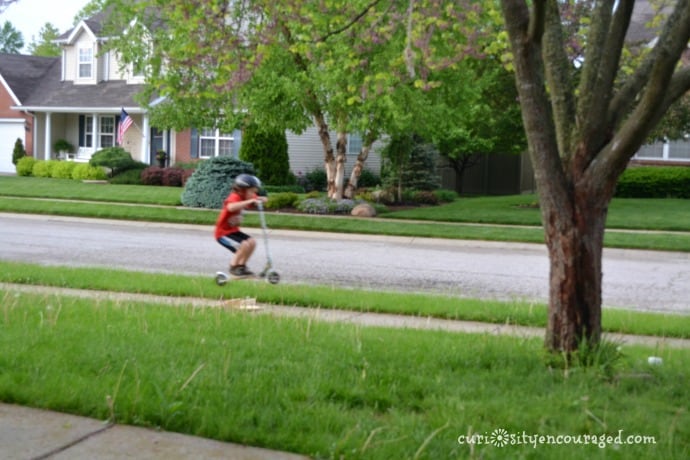

1. Give Children Access to Materials
Let kids play with the things you already have on hand or purchase a couple of items just for them. My children love and use-
- Tarps
- PVC pipe
- Wood Scraps
- Rope
- Blankets
- Nails and Screws
- Items Found Outside- Sticks, Rocks, Leaves, Dead Trees, Live Trees

2. Teach Children How to Use Real Tools
Hammering a nail, using a screwdriver, and tying knots are great skills to teach.

3. Find Inspiration
Books We Love-
Shows We Love-
Local Classes We Love-
4. Let Them Get Building!
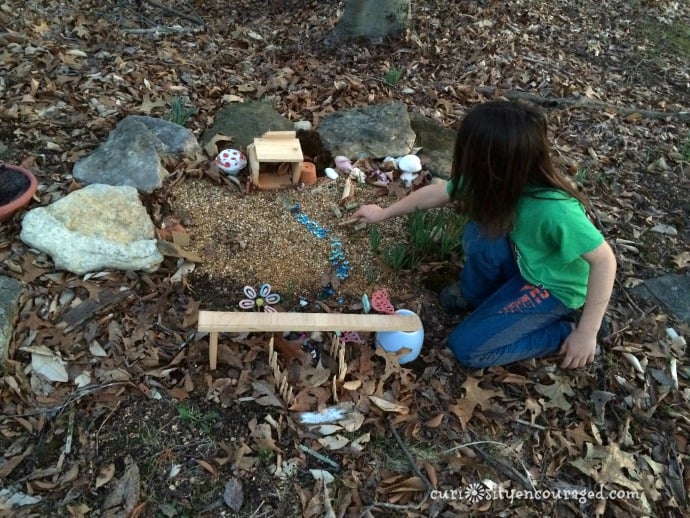
Creating an outdoor classroom is as simple as stepping outside with a book or magnifying glass. The more time you spend outdoors, the more you’re kids will learn. If you aren’t an outdoors person or your kids feel uncertain, start with a simple hands-on activity. Collect leaves and do a leaf rubbing or make a simple birdfeeder and see how many different birds visit. Whatever you do, know that when we spend time outside learning happens. The Earth is our classroom. We just have to step outside.

